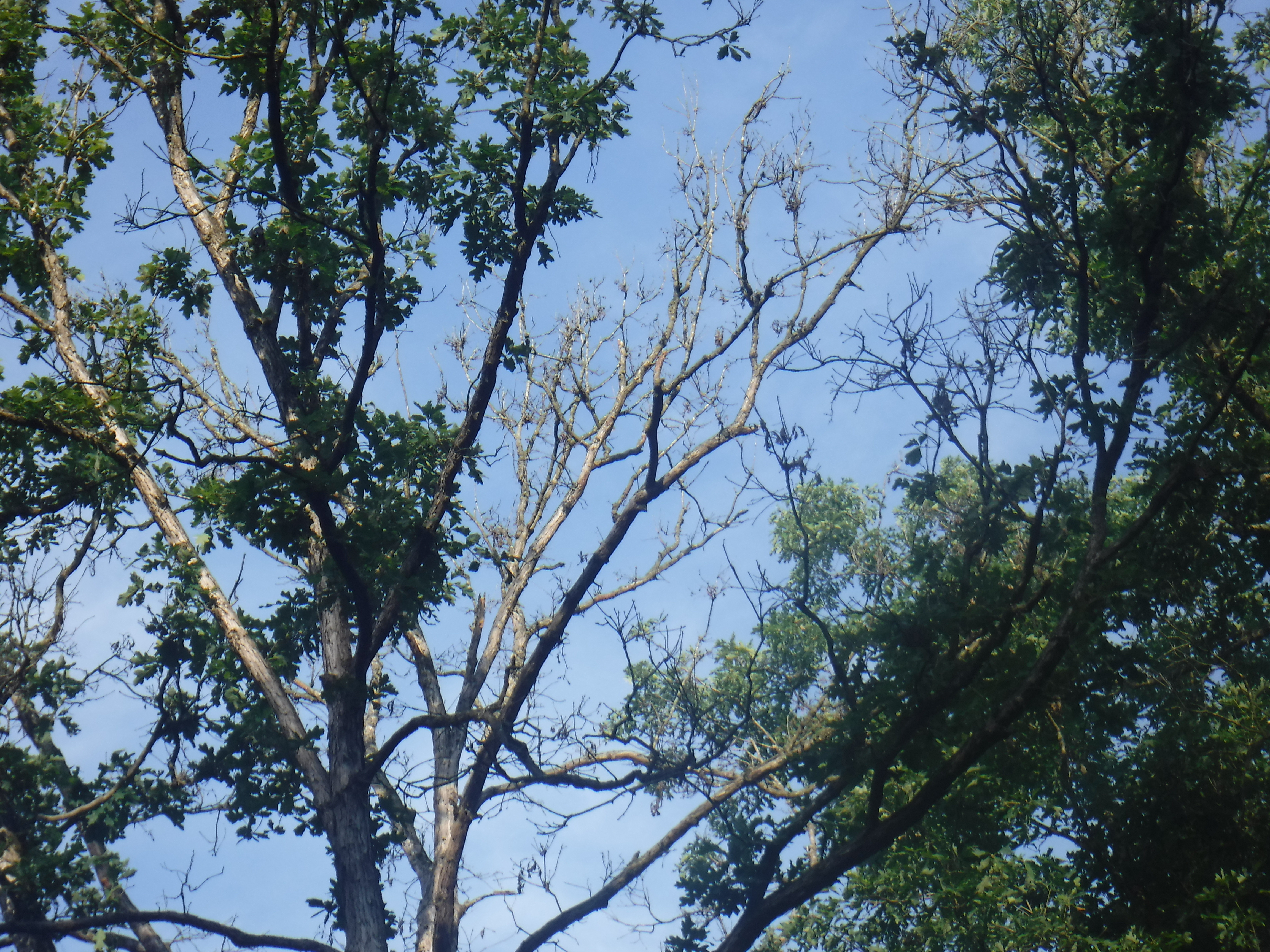The Guide to Safe Scouting defines “hazard trees” as “dead trees, live trees with dead parts, and live trees that are unstable due to defects and are within striking distance of people or property.”
The author recently had occasion at summer camp to look up at a tree that was towering over a tent he was about to occupy. The author discovered that the tree was in fact quite deceased, and had been for some time, as evidenced by some portions of the trunk that were rotten. Tree limbs at the top of the tree were noticeably dead, and towered over several unoccupied wall tents. Below is a photo of the dead tree:

Once notified, the camp promptly removed the tree from the campsite. By way of reminder, the Guide to Safe Scouting states as follows regarding “Hazard Trees”:
- Assess your site. Look up, look down, and look all around when parking a vehicle, hiking on the trail or selecting a campsite.
- Avoid campsites with hazard trees. Dead trees and dead limbs may fall at any time. Trees without needles, bark, or limbs may indicate structural defects.
- If a campsite has hazard trees but must be used, be sure that all tents, chairs, hammocks, and work areas are outside the trees’ failure zone or fall radius. The fall radius on flat ground is 1½ times the height of the tree or tree part that could fail. Sloping ground could increase the danger zone.
- Don’t use dead trees, hazard trees, or other unstable objects to support tents, canopies, or hammocks.
- Check the environment constantly for changes, including the weather, as storms can increase the likelihood of trees or parts of trees falling.
Safe Scouting – and don’t forget to “look up!”.
